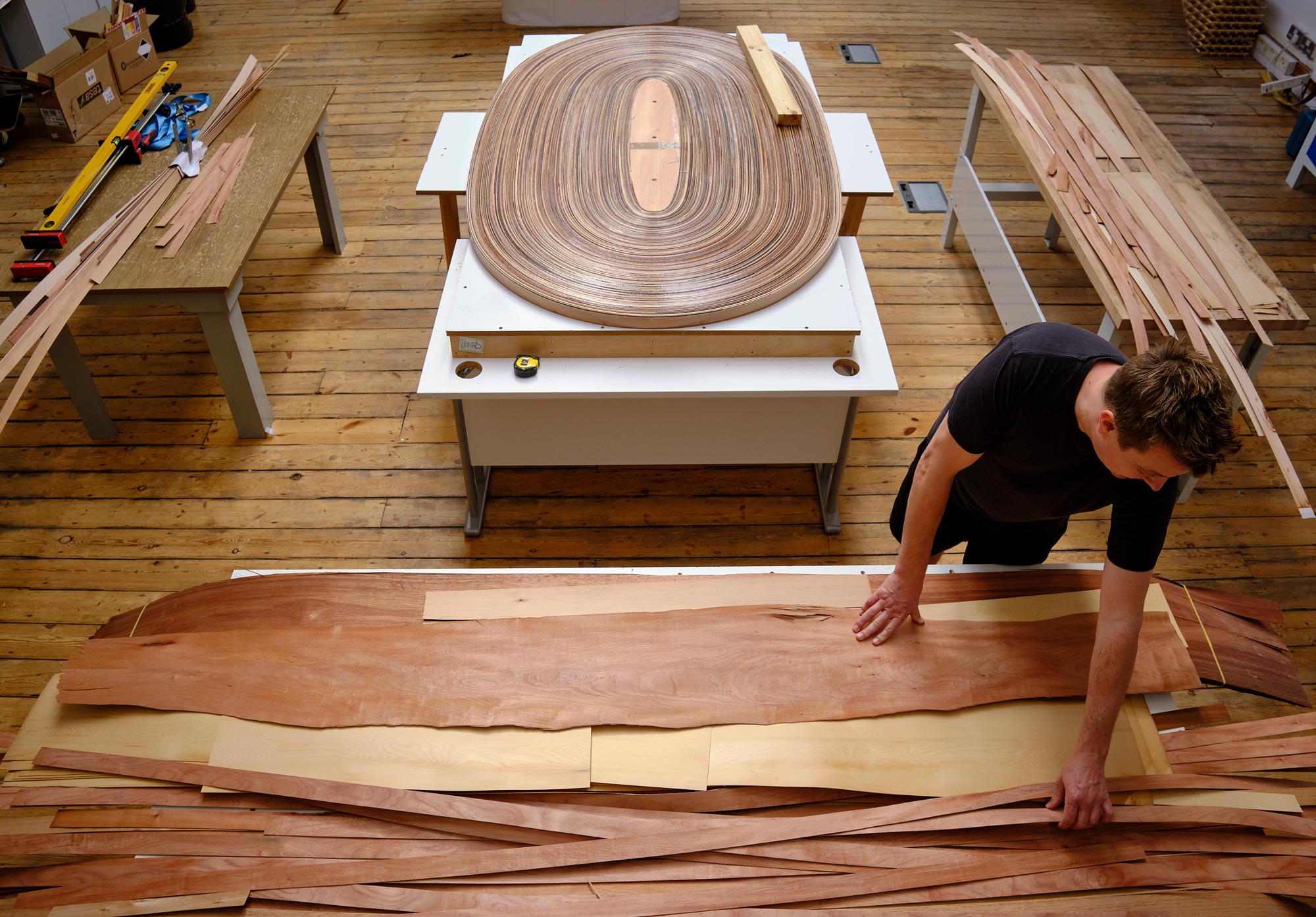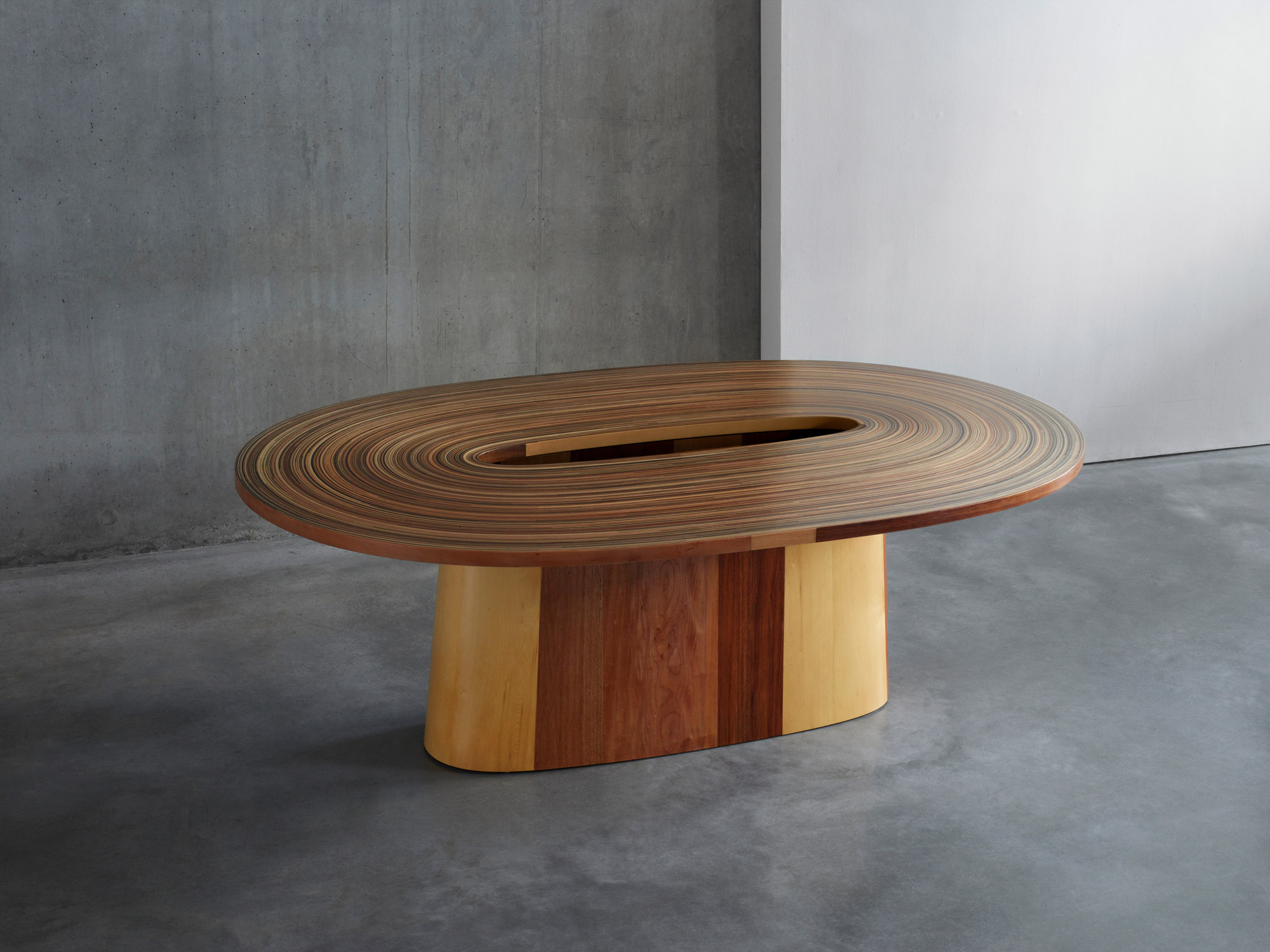Rescuing climate-stressed trees
In a recent report, UNESCO noted Tasmania's World Heritage forests remove more carbon from the atmosphere than any other of their wilderness sites. In short, our forests are critical to solving climate change.
But with increasing pressure on trees from extreme events like drought and heat stress resulting from climate change, there is urgency around understanding how to make sure our forests remain resilient.
University of Tasmania plant scientist Professor Tim Brodribb (BSc Hons 1992, PhD 1997) and his team are playing a crucial role in these investigations.
Tim has shown that when a plant dies, a startling phenomenon occurs. There is a lightning-like bolt that zaps along the veins of the leaves – death is instantaneous. Tim and his team caught the moment on camera, the first scientists in the world to show this.
“At a critical threshold, the tree dies – no one has understood that before,” he said.
“Predicting that threshold for different species will be critical to saving Tasmania’s trees in a warming climate.”
Having researched Tasmania’s unique and ancient forests for three decades, Tim is concerned by the speed of change and wants to avoid a situation where mass plant deaths occur, releasing carbon into the atmosphere rather than storing it.
The tiny cameras he has fitted to leaves also measure leaf thickness, which shrinks and swells each day as plants transport water through their cells.
He said the footage provides information on how dry the plant is, how the roots are functioning, and the opening and closing of the ‘valves’ that regulate how plants lose water.
Tim is one of three University of Tasmania researchers to be awarded a Fulbright scholarship in 2022. The Fulbright will allow him to travel to northern California to use the world-first technology developed by his group to monitor the impact of a warming climate on sensitive ferns and Redwoods.
“It is clear that the sustainable health and prosperity of both Australia and the US is fundamentally linked to the health of the agricultural and natural plant systems that sustain us.”
“We need to understand when plants are becoming stressed so we can intervene,” Professor Brodribb said.
Such research could potentially help us better understand what is required for plants to survive stressful, climate-change-induced events and keep carbon locked up in our forests.

Capturing carbon by design
And what about trees that are already dead? Could clever furniture design be a way of capturing the carbon they contain and transforming it into new objects of beauty.
Tasmanian-born, London-based designer Brodie Neill (BFA Hons 2001) believes so.
“I hate waste,” Brodie said during our Alumni magazine interview. He was speaking from his London studio, about to get to work turning reclaimed timbers, ocean plastics and repurposed metals into prized furniture.
In 2013, Brodie created his progressive furniture brand, Made in Ratio, which has a focus on circularity. He recently exhibited at Sotheby’s and has been featured in Taschen’s Design Now (2007) and Time Magazine’s annual Design 100.
His influential timber designs include Recoil, an elliptical table made from Tasmanian timbers salvaged from hydroelectric dams.
The table mirrors the growth rings that scientists use to gauge the health and age of a tree. Recoil is made of veneers of Huon pine, Tasmanian oak, celery top pine, sassafras, myrtle, and blackwood, all found in the Pieman River valley.
Brodie’s respect for his materials extends back to when he was studying at university. “We explored design through a strong sense of craft and materials,” he said.
“Back in my UTAS days, we learned that when you pick up a piece of material, there’s a responsibility to it. Don’t be wasteful. Celebrate it to its potential."
“There are amazing reclaimed timbers. Really, they are in abundance – you just have to be innovative and committed to identifying and refashioning them.”
Brodie takes the same waste-avoiding approach with plastic, particularly ocean plastics.
In 2016, he represented Australia at the inaugural London Design Biennale at Somerset House, where he launched his now iconic Gyro table as part of a critically acclaimed installation: Plastic Effects.
Brodie felt strongly that, as the world’s largest island, Australia needed to take a leading role in tackling ocean plastics. He describes Gyro as a “galactic mosaic of a table”, an “international kaleidoscope” that uses ocean plastics sent to him from locations along the 36 longitudinal lines of the Earth.

“From there, it all accelerated quite quickly. I was on the BBC World Service and the 7:00pm news,” he said. Brodie recently collaborated with the UN Oceans Forum and presented his ocean plastic research to the European Union in Brussels.
“It has taken me from the design desk to being a spokesperson for these issues that my work represents.”
Brodie will be in Tasmania over the summer of 2022 to see his solo Design Tasmania exhibition which features Recoil and other defining pieces from his career, including a piece he made in his third year at UTAS, which he said, “still holds up”.
“It’s a bit of a departure point for exploring the rest of my work.”
Written by Katherine Johnson for Alumni Magazine Issue 53, 2022.
Connect with our alumni community to discover more.
Top of page: Professor Tim Brodribb with the ‘optical dendrometer’ sensor that he will be using on Californian Redwoods during his time at the University of Santa Cruz. Image: Peter Allen


